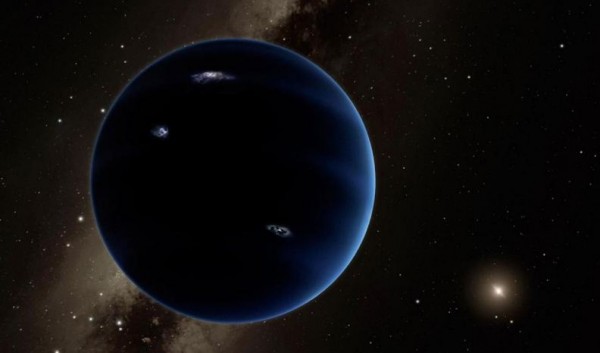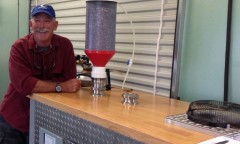By Arthur Dominic J. Villasanta , | April 07, 2017

Planet Nine (artist's concept).
Astronomers have narrowed the search for the mysterious Planet Nine to four intriguing candidates thanks to the work of more than 60,000 volunteer citizen-scientists from around the world.
These citizen-scientists joined the Planet Nine hunt launched by the Australian National University (ANU) as an online effort in the quest for Planet Nine, also called Planet X by some. The search for Planet Nine involved the citizen-science site Zooniverse.org.
Like Us on Facebook
You can learn more about it here. Note, however, that the public-participation aspect of the project has ended.
The four unknown objects that could be Planet Nine are to be found in images of the southern sky captured recently by the SkyMapper telescope at Siding Spring Observatory in Australia. ANU said over 60,000 people from around the world scoured these photos.
These eager volunteers made some five million classifications, said ANU, which organized the citizen-science project. Astronomers will now use Siding Spring and other telescopes around the world to investigate the four objects to determine if they're viable Planet Nine candidates.
"We've managed to rule out a planet about the size of Neptune being in about 90 percent of the southern sky out to a depth of about 350 times the distance the Earth is from the sun," said research leader Brad Tucker from the ANU Research School of Astronomy and Astrophysics.
"With the help of tens of thousands of dedicated volunteers sifting through hundreds of thousands of images taken by SkyMapper, we have achieved four years of scientific analysis in under three days," according to Tucker. "One of those volunteers, Toby Roberts, has made 12,000 classifications."
The existence of Planet Nine was first broached in 2014 by astronomers Chad Trujillo and Scott Sheppard. They believe there may be a "massive trans-Neptunian planet" on the outskirts of our solar system due to "similarities in the orbits" of distant objects that orbit Neptune.
Konstantin Batygin and Mike Brown of Caltech in January 2016 announced they'd found signs of Planet Nine using modeling and computer simulations. Then came Swedish simulations arguing Planet Nine might have been formed around another star, and then was captured by the sun.
Batygin and Brown in October 2016 also said the existence of Planet Nine adds "wobble" to our solar system, tilting it in relation to the sun.
The hypothesis was put forward in a paper titled "Solar Obliquity Induced by Planet Nine" by Batygin and Brown, along with Caltech graduate student Elizabeth Bailey.
"Because Planet Nine is so massive and has an orbit tilted compared to the other planets, the solar system has no choice but to slowly twist out of alignment," said lead author Bailey.
The new research led by Bailey is based on the observation the sun rotates on a different axis than the orbits of the planets.
The hunt for Planet Nine remains.
-
Use of Coronavirus Pandemic Drones Raises Privacy Concerns: Drones Spread Fear, Local Officials Say

-
Coronavirus Hampers The Delivery Of Lockheed Martin F-35 Stealth Fighters For 2020

-
Instagram Speeds Up Plans to Add Account Memorialization Feature Due to COVID-19 Deaths

-
NASA: Perseverance Plans to Bring 'Mars Rock' to Earth in 2031

-
600 Dead And 3,000 In The Hospital as Iranians Believed Drinking High-Concentrations of Alcohol Can Cure The Coronavirus

-
600 Dead And 3,000 In The Hospital as Iranians Believed Drinking High-Concentrations of Alcohol Can Cure The Coronavirus

-
COVID-19: Doctors, Nurses Use Virtual Reality to Learn New Skills in Treating Coronavirus Patients











